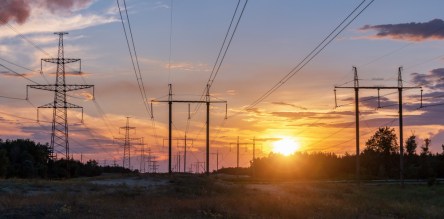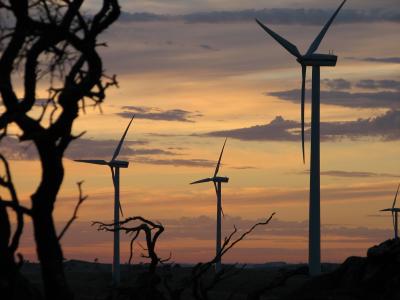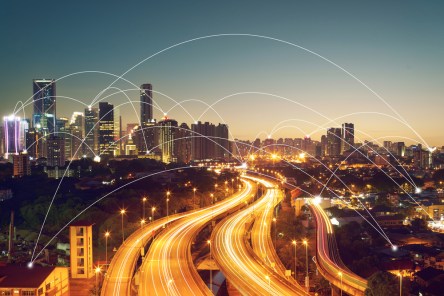In July, parts of the U.S. saw record demand for electricity, driven by higher temperatures pushing up power usage. Pennsylvania-based regional transmission organization PJM Interconnection LLC reported 144,557 megawatts of demand on July 3, the highest level in almost two years. Power usage in New York City reached its highest level since 2013 the previous day, July 2. On the other coast, more than 80,000 Southern California residents lost power on the July 7-8 weekend as a heat wave caused problems with distribution system equipment. Meanwhile, ERCOT, the grid operator for most of Texas, expects to set a new peak demand record this summer. Resource capacity should allow the grid to operate reliably, but unexpected outages to major generators could prompt demand-side management measures, including potential emergency load shedding. Strain on the grid has obvious implications for property managers, since the residential and commercial sectors account for about 39% of total U.S. energy consumption and more than two-thirds of the electricity used nationwide. Summer heat and havoc it wreaks on the power grid is one reason many property owners seek to incorporate energy efficiency as a core business tenet. One resource in that effort is the Green Lease Leaders program, which encourages lease terms that give both landlords and tenants a stake in adopting building efficiency practices and investments. The Institute for Market Transformation, which administers the Green Lease Leaders program with the U.S. Energy Department’s Better Buildings Alliance, estimates that green leasing could help reduce utility bills by up to $0.51 per square foot (22%) in U.S. office buildings alone; if all leased office buildings executed green leases, the market could achieve over $3 billion in annual energy costs savings. In June, IMT and Better Buildings Alliance recognized companies that incorporated innovative energy...
Renewable Power
Google's energy business plan
After signing its first agreement to purchase all the electricity from a 114-megawatt wind farm in Iowa in 2010, Google set the target to be powered 100 percent by renewable energy only two years later. According to one of the company’s latest blog posts on the initiative, the said target will be reached in 2017, following a complex process involving many power purchase agreements. “To reach this goal we’ll be directly buying enough wind and solar electricity annually to account for every unit of electricity our operations consume, globally. And we’re focusing on creating new energy from renewable sources, so we only buy from projects that are funded by our purchases,” said Urs Urs Hölzle, Google’s senior VP of technical infrastructure. Technology companies have been criticized for the carbon footprint of their operations, which have expanded so fast they now account for about 2 percent of global greenhouse emissions, rivaling the aviation industry. The internet giant is already the world’s biggest corporate buyer of renewable electricity (Amazon is a distant second), last year buying 44 percent of its power from wind and solar farms. The majority of the green power comes from windfarms in the U.S., but also from projects around the world including sites in Sweden, the Netherlands and Chile. In order to get here, Google took part in a number of large-scale deals with renewable producers, guaranteeing to buy the energy they make with their wind turbines and solar cells. Those guarantees help wind companies obtain bank financing to build more turbines. One of the most attractive, cost-efficient features of wind power is that, unlike carbon-based power, wind supply prices don’t fluctuate, thus allowing Google to plan better. Moreover, the more renewable energy it purchases, the cheaper those sources get—in Chile, Google said,...
Death to Power
The Changing Energy Industry
Editor’s note: This piece originally appeared in the fall issue of NAREIM Dialogues. Electrification is perhaps the greatest technological advancement of the 20th century. The electric power grid, the system that delivers electrification, is considered by many to be the largest and most successful machine ever built. But it may be about to die. The power grid “machine” is an interconnected system of long distance transmission lines, local distribution systems, transformers, substations, generating power plants, and the computers and control systems that manage it. In the United States, it delivers $400 billion in electricity annually over 7 million miles of power lines and through the efforts of 3,200 utility companies. The infrastructure in the system is valued at over $850 billion. Uptime is an astonishingly high 99.97% (I certainly wish my laptop could approach that level of reliability) and growth in the system is delivered relatively reliably by simply calling your utility. All this is delivered at price that is slightly below where it was in 1960 in real terms. This is an incredible success story; it seems like there is little here to concern real estate investors and owners…right? If only it were so simple. We have entered a period of incredibly rapid change in energy technologies, and the future of the utilities that deliver power to our buildings, and even the future of the electric grid itself, is in considerable flux. The forces threatening to disrupt the power grid include distributed solar systems, fuel cells, demand response technologies, battery storage, energy efficiency, electric vehicles, and various micro grid technologies. We can sum these up with the phrase: be your own power plant. Or to be cheeky, “adios, utility company.” Even if you think your particular investments, assets, buildings or properties won’t mess...



